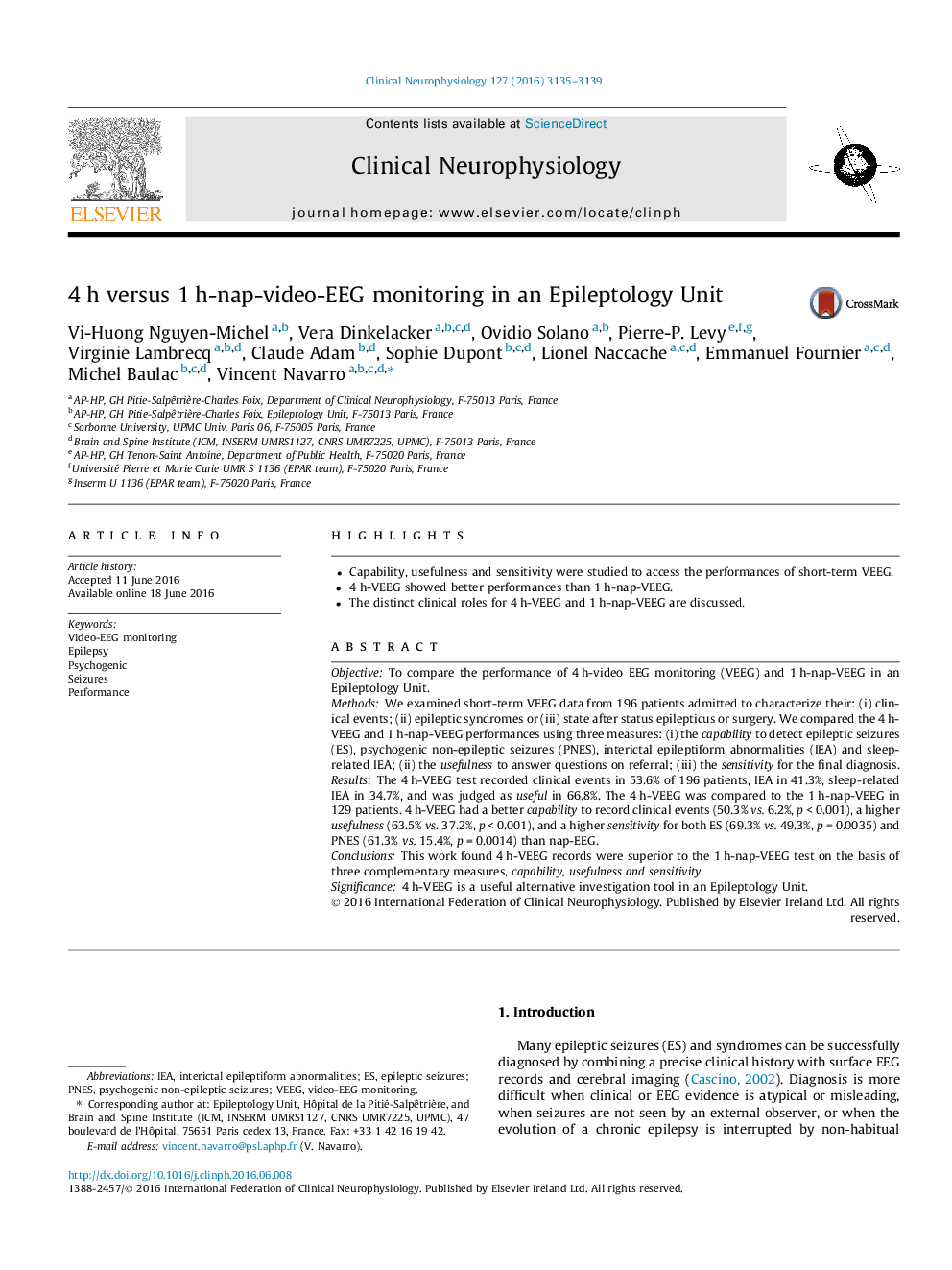| Article ID | Journal | Published Year | Pages | File Type |
|---|---|---|---|---|
| 6007272 | Clinical Neurophysiology | 2016 | 5 Pages |
â¢Capability, usefulness and sensitivity were studied to access the performances of short-term VEEG.â¢4 h-VEEG showed better performances than 1 h-nap-VEEG.â¢The distinct clinical roles for 4 h-VEEG and 1 h-nap-VEEG are discussed.
ObjectiveTo compare the performance of 4 h-video EEG monitoring (VEEG) and 1 h-nap-VEEG in an Epileptology Unit.MethodsWe examined short-term VEEG data from 196 patients admitted to characterize their: (i) clinical events; (ii) epileptic syndromes or (iii) state after status epilepticus or surgery. We compared the 4 h-VEEG and 1 h-nap-VEEG performances using three measures: (i) the capability to detect epileptic seizures (ES), psychogenic non-epileptic seizures (PNES), interictal epileptiform abnormalities (IEA) and sleep-related IEA; (ii) the usefulness to answer questions on referral; (iii) the sensitivity for the final diagnosis.ResultsThe 4 h-VEEG test recorded clinical events in 53.6% of 196 patients, IEA in 41.3%, sleep-related IEA in 34.7%, and was judged as useful in 66.8%. The 4 h-VEEG was compared to the 1 h-nap-VEEG in 129 patients. 4 h-VEEG had a better capability to record clinical events (50.3% vs. 6.2%, p < 0.001), a higher usefulness (63.5% vs. 37.2%, p < 0.001), and a higher sensitivity for both ES (69.3% vs. 49.3%, p = 0.0035) and PNES (61.3% vs. 15.4%, p = 0.0014) than nap-EEG.ConclusionsThis work found 4 h-VEEG records were superior to the 1 h-nap-VEEG test on the basis of three complementary measures, capability, usefulness and sensitivity.Significance4 h-VEEG is a useful alternative investigation tool in an Epileptology Unit.
